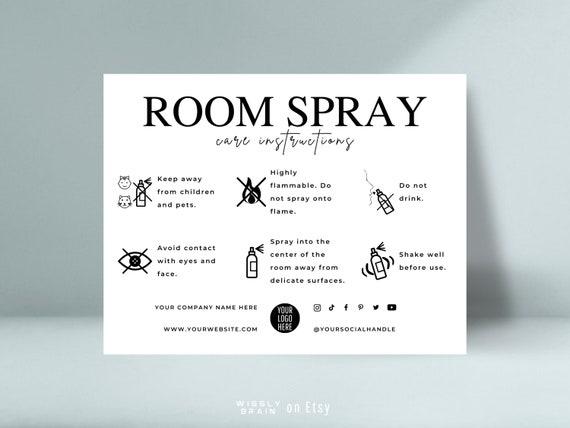Table of Contents
- Understanding the Risks of Sharing Personal Spray Products
- Best Practices for Sanitizing and Handling Spray Bottles
- Recommendations for Safe Usage in Public and Private Spaces
- Guidelines for Educating Others on Spray Safety Protocols
- The Conclusion
Understanding the Risks of Sharing Personal Spray Products
When sharing personal spray products such as perfumes, deodorants, or sanitizers, there are several health-related hazards that users should be aware of. These items often come into direct contact with skin or mucous membranes, creating a perfect pathway for bacteria and viruses to spread between individuals. The risk is especially pronounced during cold and flu seasons or pandemics, where pathogen transmission is a priority concern. Moreover, the chemical composition in sprays can react differently based on each person’s skin type, leading to allergic reactions or irritation, which may compromise skin integrity and increase susceptibility to infections.
To mitigate these risks, always remember to:
- Avoid direct contact of the nozzle with skin or mouth to prevent contamination.
- Use single-use applicators or disposable cotton pads when sharing products.
- Clean spray heads regularly with alcohol wipes if sharing is unavoidable.
- Be mindful of individual allergies and sensitivities to ingredients before sharing.
Implementing these precautions ensures that sharing personal spray products does not compromise hygiene or safety, preserving both effectiveness and user health.
Best Practices for Sanitizing and Handling Spray Bottles
Maintaining the cleanliness of spray bottles is paramount to prevent cross-contamination, especially when sharing them with others. Always start by thoroughly rinsing the bottle and nozzle with warm, soapy water after each use. Follow up by disinfecting with a solution containing at least 70% isopropyl alcohol or a mix of household bleach and water. Allow each component to air dry completely before reassembling to ensure all pathogens are eliminated. Regularly inspect nozzles for clogs, residue, or damage that could harbor bacteria or mold, and replace parts as necessary to uphold sanitation standards.
Safe handling practices extend beyond cleaning. When sharing spray bottles, it’s essential to:
- Label each bottle clearly to avoid mix-ups and ensure users know the contents and cleaning status.
- Minimize direct contact with the nozzle and avoid touching the mist release area to reduce germ transfer.
- Store bottles properly in a cool, dry place away from sunlight and contaminants.
Recommendations for Safe Usage in Public and Private Spaces
Sharing a spray in any environment requires vigilance to prevent unwanted contamination and ensure hygiene. In public areas, always carry individual disposable applicators or provide sanitized spray heads to minimize direct contact. Make sure to disinfect the spray nozzle before and after every use, using alcohol wipes or a suitable sanitizer. This small but crucial step can drastically reduce the spread of germs and protect you and those around you. Additionally, stay mindful of your surroundings-avoid sharing sprays in crowded or enclosed spaces where airborne transmission risks are higher.
When sharing in private spaces, establish clear boundaries to maintain personal safety without compromising convenience. Consider the following practices for an effective safety routine:
- Personal labeling: Mark each bottle clearly to prevent mix-ups and cross-usage.
- Controlled access: Limit the number of people touching the spray, ideally designating one person as the handler.
- Regular replacement: Replace spray bottles regularly to avoid bacterial buildup and ensure maximum product efficacy.
Implementing these measures fosters a safer environment and reassures all users that health remains a priority when sharing personal items like sprays.
Guidelines for Educating Others on Spray Safety Protocols
When introducing others to the use of sprays, it is paramount to emphasize clear communication regarding potential hazards and protective measures. Encourage users to always read and follow label instructions meticulously to prevent mishandling or accidental exposure. Educators should demonstrate proper application techniques, including maintaining an appropriate distance and ensuring adequate ventilation in the sprayed area. Reinforcing the importance of wearing protective gear-such as gloves, masks, and eye protection-can significantly reduce the risk of harmful contact or inhalation.
Creating an open environment where questions and concerns about spray products are addressed builds trust and promotes responsible use. Providing a checklist of safety best practices can serve as a quick reference, highlighting critical points like:
- Storing sprays out of reach of children and pets
- Never mixing different chemical sprays unless specified
- Disposing of empty containers according to local regulations
- Washing hands thoroughly after use
By fostering awareness and accountability, you ensure that everyone involved feels confident and protected when handling sprays, ultimately supporting a safer environment for all.
The Conclusion
In conclusion, sharing your spray products safely requires mindful consideration and adherence to basic hygiene practices. By following these essential safety tips, individuals can minimize the risk of contamination and ensure a healthy environment for everyone involved. Staying informed and practicing caution not only protects your well-being but also promotes responsible use within the community. As awareness grows, prioritizing safety will remain key in fostering trust and care when sharing personal spray items.Check Our Other Blogs
- StunGun – Your Trusted Source for Stun Guns, Laws, and Self-Defense Tips
- PepperSprayLaws – Your Trusted Resource for Pepper Spray Information
- StunGunLaws – Your Trusted Guide to Stun Gun Legality and Safety




